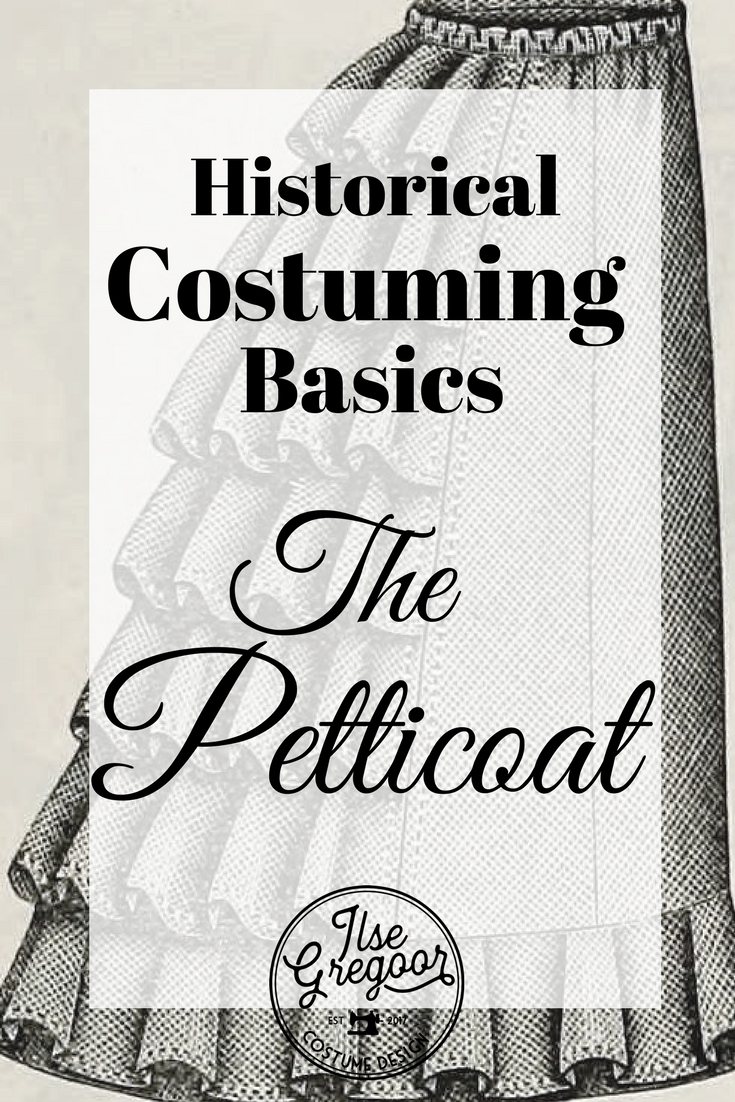Historic costuming basics: The petticoat
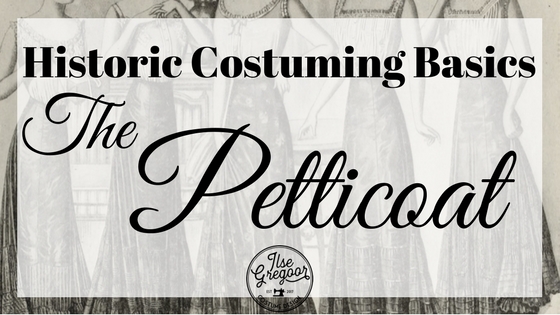
the first record of the word “petticoat” was between 1375 and 1425. It comes from the two words pety and coote, literally meaning “a small coat,”. Originally it was used to describe a padded coat worn by men under armor for warmth, from the mid-15 century onward it referred to a garment worn by under their gowns.
Petticoats had three main functions. First was for warmth. In times without central heating, layers are essential to keep you cozy. Next is for creating a fashionable silhouette. Layers can add volume to the skirts and can be cut in different ways, all to create a shape that was desirable at that specific time. The last function is modesty. Right now we don’t think of legs as an erotic body part. We are more focused on the bosom. But in the past this was the other way around. Legs were the desirable body part, and extra layers in the skirt could keep them hidden.
Petticoats in the fifteenth and sixteenth century
In “medieval clothing and textiles 12” by is explained that for a short period in the last years of the century, there was some confusion what exactly the difference was between a kirtle and a petticoat. It says: “Both could consist of a skirt part with a sleeveless, front-lacing bodice; sometimes a separate skirt with a short waist piece or none at all; the and sometimes a skirt with a sleeved bodice.” It states that even to contemporaries there was some confusion about the differences. There are accounts of the time that describe one item as either a petticoat or a kirtle, but there are also accounts that differentiate between kirtles and petticoats in the same document. So it was at least clear to some people what the differences between the two were.
In “ The Tudor Tailor” the difference between a kirtle is explained like this: “A woman’s outer clothes consisted of various combinations of petticoat, kirtle, gown, and jacket. Which of these she wore, and how many of them at one time, depended on her rank, the weather, the occasion, and the gradual evolution of fashion through the century. […] The garment worn by all women over the smock consisted of a fitted bodice with attached skirt. In the early Tudor period, this was called a kirtle. By the 1550s, the word ‘petticoat’ was being used to describe this item of clothing and ‘kirtle’ referred to a garment that was worn over, or instead of, a petticoat by wealthier, more fashionable women.”
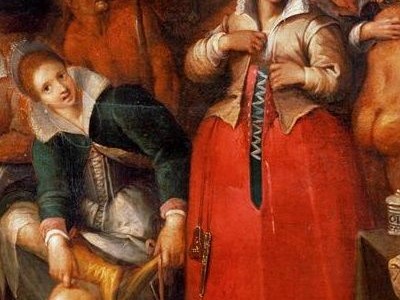
The whole differentiating between the different items is made more difficult by the fact that we don’t have an actual garment that dates before 1600. So we have to rely on written accounts mostly, because petticoats are not much pictured in paintings either.
But one thing is for certain: and that is color. People of the Elizabethan era liked red! Most of the written accounts of petticoats are described as being some shade of red. This was most likely because the Elizabethans seemed to think red was a warming color, and therefore dressing in red would make them feel warmer too. This is not to say all petticoats were red, people had personal preferences, and some may have had financial limitations which made them unable to buy dyed fabric, but red sure was popular!
Seventeenth Century
During the 17th century, the fashions gradually changed to a more loose and flowing style. From around 1650 we seem to notice that the supportive stays no longer have a skirt attached. Because there seemed to be a need for a separate supportive garment, automatically the petticoat skirts became a separate garment too. And because of the more flowy fashions, they also became more important in creating the right silhouette. In Köhler’s A history of costume is described that from about the year 1665 the farthingales disappeared, and petticoats became important in shaping the skirt. He stated that to achieve the right silhouette, sometimes eight to ten petticoats were worn at the same time. It wasn’t that complicated of a garment. Petticoats were simply cut from a length of fabric and closely gathered in small pleats at the waist to give it it’s shape.
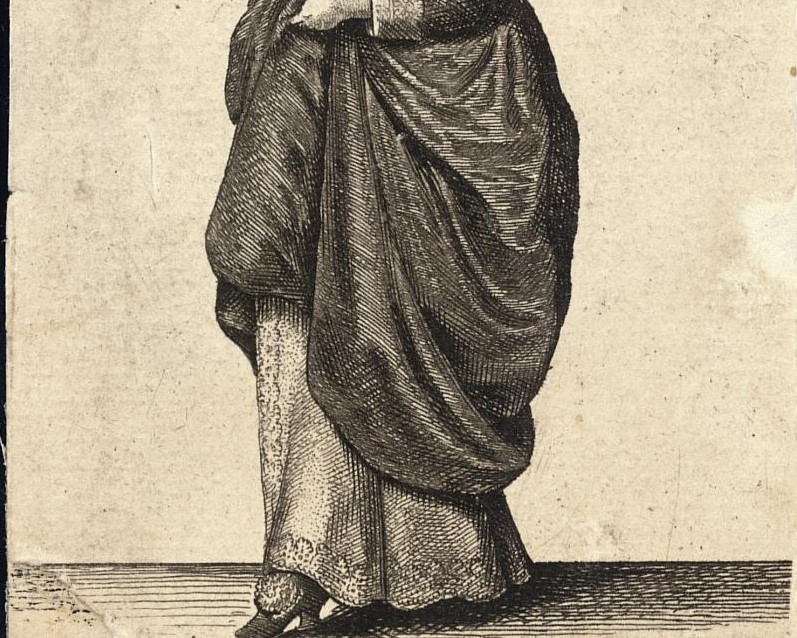
During the end of the century, there seems to have been a fashion for gowns with open front skirts. When the skirt was open in the front, the petticoat could be seen beneath it. Especially in France this fashion seems to be prevalent. Ladies wore an over-dress called a robe, and an under-dress called a jupe. Although jupe also seems to have been the word for just an underskirt. These days we think of petticoats as undergarments. But back then a petticoat could basically mean any skirt-like garment worn underneath the outer gown. And because they could be seen, they became more elaborate and decorated.
Eighteenth Century
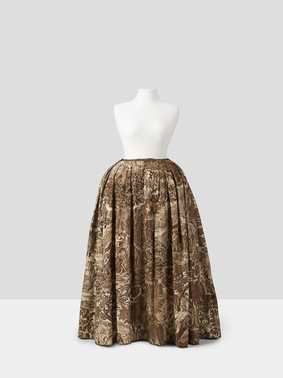
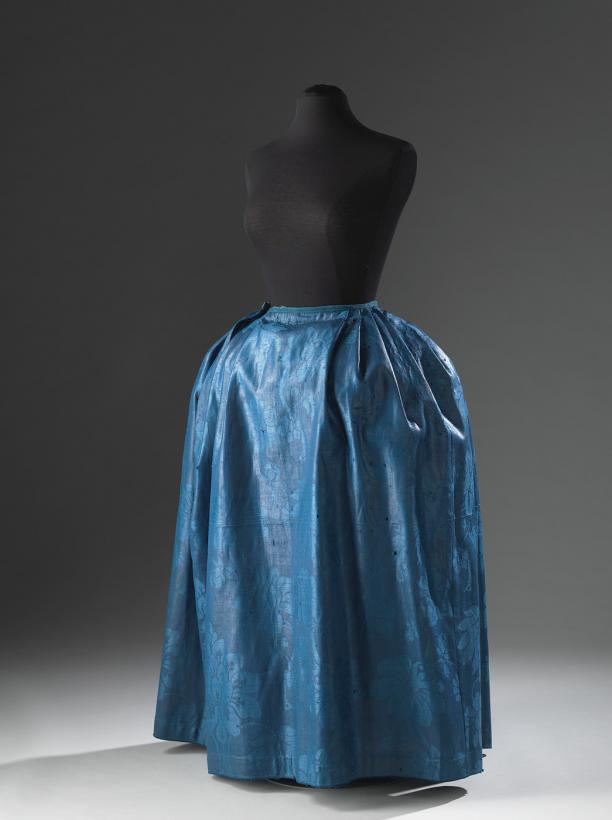
This continued into the 18th century. By then, the open robe a la francaises displayed a big part of the petticoat skirt. Robes often came with a petticoat of the same fabric, embroidered silks or lavishly trimmed, but ladies could change these out for some variation. By this time the stays were a completely separate garment from the petticoat, and the petticoat had basically the shape of a skirt. During this era we can see some lovely quilted petticoats. These were often made of plain fabrics, but the quilted designs give some incredible decorations.
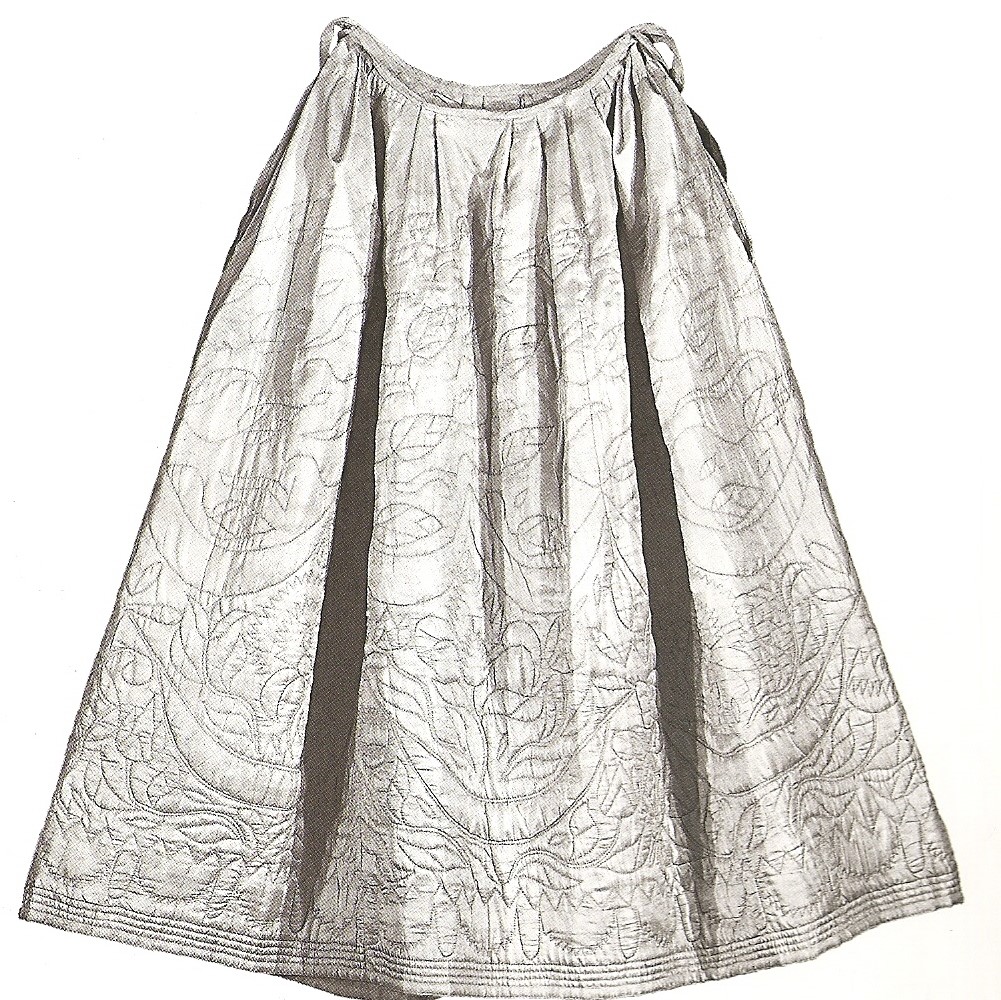
Because of the width of the robe a la francaise pocket hoops or paniers were needed to give the skirts their shape. So less petticoats were needed to achieve the desired silhouette. But over every structured garment, a farthingale, a panier or a crinoline, an extra petticoat was still worn to soften the lines of the skirts and to make sure you can’t see the bones trough the outer layer of fabric. So under a robe a la francaise ladies probably wore two petticoats: an outer petticoat, lavishly decorated, and one beneath that to protect the dress from the paniers.
Nineteenth century
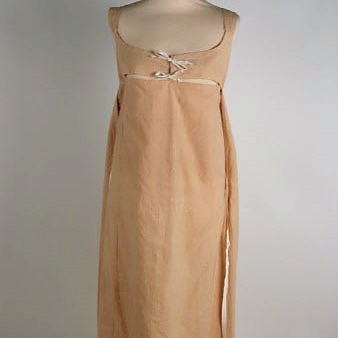
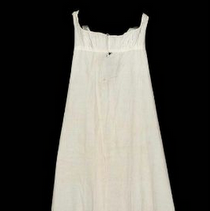
Around 1800, after the French revolution, we can see a completely different shape in garments: the empire line gown. And this also comes with its own completely different petticoat. Petticoats lost all their fullness and were basically long sleek under dresses. During this era, petticoats briefly had a bodice again. Here the purpose of the petticoat was not to give the right silhouette, but rather to give some modesty. The fashion fabrics of this era were so thin and flimsy that an additional layer of fabric was needed to provide some coverage. The petticoat provided that.
When the skirts bellowed out again during the romantic era, multiple petticoats provided the right silhouette again. From about 1820 we see the skirts gradually widening again. A bit of fullness added to the skirts every time.
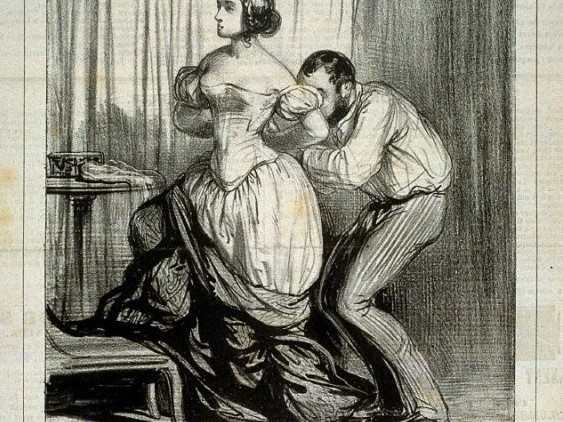
Of course you can imagine that by the 1840’s, when skirts were incredibly round and full, the petticoats, all worn together, were quite heavy. So by this time they started wearing a crinoline. Like the farthingale and the panniers, this provided the fashionable silhouette, so the number of petticoats reduced again. Ladies generally wore one petticoat underneath their crinoline, for modesty and warmth, and one or two over their crinoline to soften the lines and protect the outer skirt
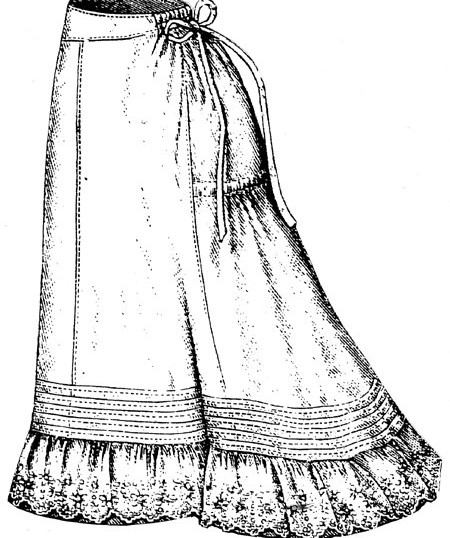
And as the skirt shapes changed, of course, the petticoats changed with them. In the beginning of the Victorian era you had those big round skirts, so the petticoats would also be quite wide and round. And in the last quarter of the 19th century, we have the bustle era, and the petticoats changed to a flat front and gathers at the back, so all the fullness would be around the bum. During the Victorian era we can also see some petticoats with ruffles to provide some extra fullness. At first all around the skirt and later in the rear.
Twentieth Century
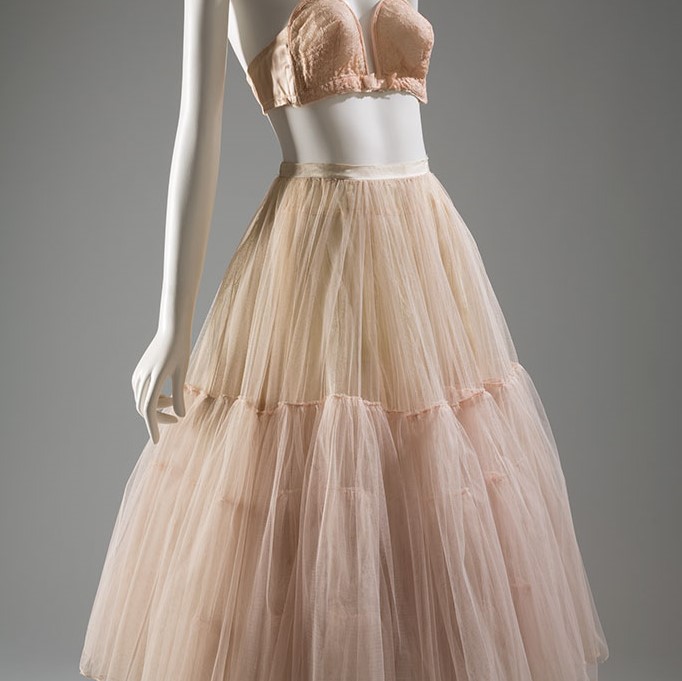
After the Edwardian era, we see petticoats disappear. During the 1920’s and 30’s we see a new garment form, the slip dress. Although this did provide some modesty, slip dresses didn’t have the same function in providing warmth and a fashionable silhouette as the petticoats did, so I regard slip dresses as a different category of clothing items, more towards lingerie. In the 1950’s the petticoat resurfaced again for a short while, with Dior’s new look. This time they were from springy net fabric and stopped around the knee. But when the sixties rolled around there came an end for the petticoats. But when you like to visit the past and make a historical dress. Now you know which petticoat shape, and how many of them, you need to wear if you want to create the historically accurate silhouette.
